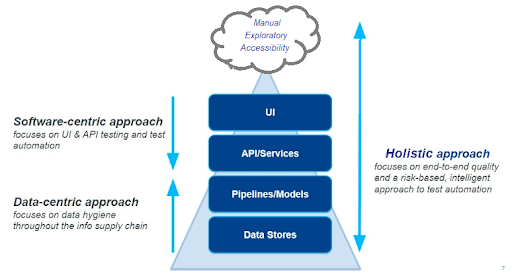5 Misconceptions about Building a Single Source of Truth (SSOT)
A few years ago, I worked with a company where the sales executives were confronting a really tough problem: they had no idea, from one month to the next, exactly what orders had been placed. Of course, this made it really hard for them to anticipate their commissions, so the heartburn associated with this data management problem was significant.
.png?width=760&name=One%20single%20source%20of%20truth%20(1).png)
This company used different sales software systems for each sales region (and in a couple regions, there were two or three active sales systems, thanks to acquisitions). There just hadn’t been enough time for the IT people to harmonize the data in all the systems - and to be honest, no one was really anticipating it. The company was focusing its development budget on new features for the main product that drove revenue.
How was the problem “solved”? Each sales executive made sure they kept a detailed record, with evidence to back up their claims, of exactly which sales should be accompanied by commissions. Every quarter, they would check their records with their commission check, and schedule a meeting with the Chief Revenue Officer if the numbers were off. The senior leader made sure to block off the first week of their calendar every quarter to manage the reconciliation process.
Everyone knows what it feels like to not have a Single Source of Truth (SSOT). You spend a lot of time hunting for information, and then even more time feeling uneasy about whatever you did find (and use). It should be straightforward to find information that’s critical to the operation of your business, and for that information to be trustworthy and consistent.
Customer details, supplier information, and a product catalog are all examples of information that’s critical to your business. You really shouldn’t have to look in multiple places for this information, and you should never have to wonder if the information you have access to is actually correct.
If all people in an organization use a single reference for information that’s important to a business (for example, customer data, order information, or a 360 degree view of all customer interactions), then silos will be broken down. Errors that arise when multiple versions of data are created and stored in separate locations, and maybe even maintained according to different governance standards
Should you invest in building a Single Source of Truth (SSOT) for a critical information asset? If so, be realistic with your expectations up front. It’s easy to be disappointed when your SSOT isn’t just a one-and-done IT initiative, and it can be difficult to figure out how to drive value from an SSOT once you have it. What misconceptions can you address in advance?
Misconception #1: I only have to build a SSOT once. An SSOT makes sense of data from multiple sources, many of which are provided by people and systems who have no visibility into what roles each other performs. Unless your data reflects historical records that will never change (for example, those in banking transactions or securities trading transactions), it is reasonable to expect that your SSOT will have to be regenerated at regular intervals (for example, when aspects of a product catalog are originated or maintained by disparate workgroups). An SSOT of a critical taxonomy might need to be updated daily, weekly, or monthly, depending on how often new records are generated or modified.
Misconception #2: My SSOT will replace all other databases and data repositories. Establishing an SSOT can help your organization take an important step towards improving data quality, but unless your organization is small, the SSOT is unlikely to replace the original sources. Think of the SSOT as an aggregate that examines all the source systems and makes an informed judgment, building records that are most likely to have high integrity.
Misconception #3: We can’t do business without a SSOT. Unfortunately, investing in development work to build and maintain an SSOT often takes a back seat to other work because it’s possible to keep the business going, just like you saw in the example above with one company’s sales executives. Like any other form of battling technical debt, your company has to prioritize the importance of building and leveraging an SSOT.
Misconception #4: The SSOT will immediately replace all other databases and data repositories that contain similar or duplicate data. Remember that most companies, especially large ones, consist of multiple workgroups and divisions with different leaders and their own unique budgets. Even when an organization builds a great SSOT, it will take time, effort, agreement, and (often) budget commitments for multiple groups to adopt and use the SSOT. You don’t “build it and they will come,” like a data-driven field of dreams.
Misconception #5: Everyone will gleefully use and maintain the SSOT once it is in place, and agree with how much truth it provides. Building and leveraging an SSOT to help control and validate inputs is a change management exercise. Even in cases where everyone in an organization is enthusiastic about adopting and maintaining an SSOT, it may take years for all groups to fully transition to using it. Implementing an SSOT is a change management exercise, and the chances for success can be increased by involving all stakeholders early and providing a high degree of transparency about what it takes to generate and maintain the SSOT.
Building a Single Source of Truth (SSOT) is, at its core, an aggregation and sensemaking exercise. You pull different viewpoints, perspectives, or beliefs about what constitutes true, high integrity data from multiple source systems, and then reconcile that information in some way. You end up with an authoritative source that you can use for doing business, for studying patterns, and for building models - a source that is updated as your understanding of your organization changes.
Ultranauts helps companies establish and continually improve data quality through efficient, effective data governance frameworks and other aspects of data quality management systems (DQMS), especially high impact data value audits. If you need to improve data understanding at your organization, or figure out which data assets and pipelines to test to generate the greatest business value, get in touch with us. Ultranauts can quickly help you identify opportunities for improvement that will drive value, reduce costs, and increase revenue.

